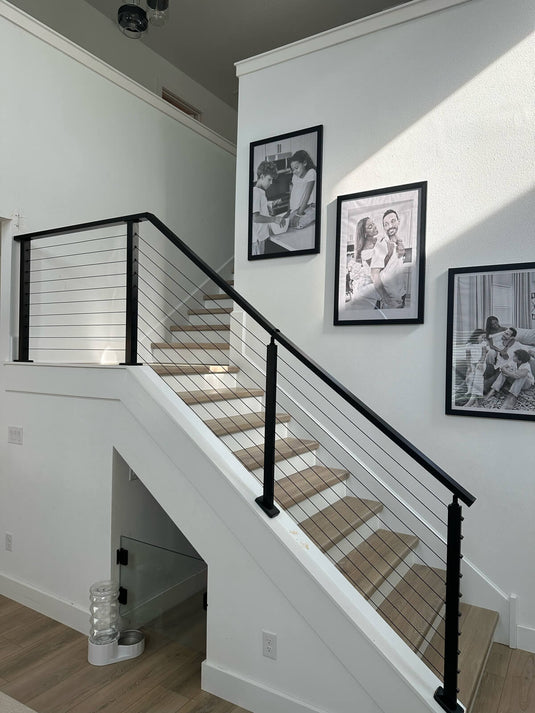TABLE OF CONTENTS
Railing System Regulations: Understanding the IRC Standards
If you are in the process of building a residential property or simply planning to add a new railing system to your home, it's important to be familiar with the regulations outlined in the International Residential Code (IRC). These guidelines have been established to ensure the safety and well-being of occupants by setting standards for railing height, post spacing, cable spacing, ball tests, and tension requirements. In this blog post, we will delve into these requirements in greater detail.
1.Railing Height
According to IRC standards, any elevated surface more than 30 inches above the adjacent ground level requires a guardrail or railing system. The height of the railing system should be at least 36 inches measured from the floor or deck surface. This minimum height requirement helps to prevent falls and accidents, especially for children or elderly individuals who may be more prone to accidents.


2.Post Spacing
Another important aspect of railing systems is the spacing of the supporting posts. The IRC requires that posts be spaced no more than 6 feet apart along the length of the railing. This requirement ensures that the railing remains stable and secure, preventing accidents that may occur due to weak or loose posts.

3.Cable Spacing
4" Sphere Test
The IRC also requires that railing systems be tested for the ability to prevent the passage of a 4-inch diameter sphere through any opening in the system. This is known as the 4-inch ball test and is intended to ensure that children's heads cannot become stuck in the railing. Any opening that a 4-inch sphere can pass through is considered a hazard and must be corrected to ensure safety.

6" Sphere Test
In addition to the 4-inch ball test, the IRC requires a 6-inch ball test for guardrails and railings intended for use around pools. The 6-inch ball test is intended to prevent children from crawling under the railing and falling from the floor.

4.Tension Requirements
The handrails and guardrails of the railing system, as well as the structural elements, need to withstand a concentrated force of 200 pounds in any direction, and the intermediate structure only needs to withstand a concentrated force of 50 pounds.
It's important to check with your local building department to see if a building permit is required for your railing system project. Compliance with all applicable codes and regulations is necessary to ensure that the project is permitted and safe.
Muzata's railing system products adhere to stringent regulatory requirements to ensure exceptional product quality and visually appealing aesthetics. We guarantee that our products will provide you with an exceptional experience, making them the optimal choice for your needs.Get yourself a sleek cable railing system to guard your loved ones!




